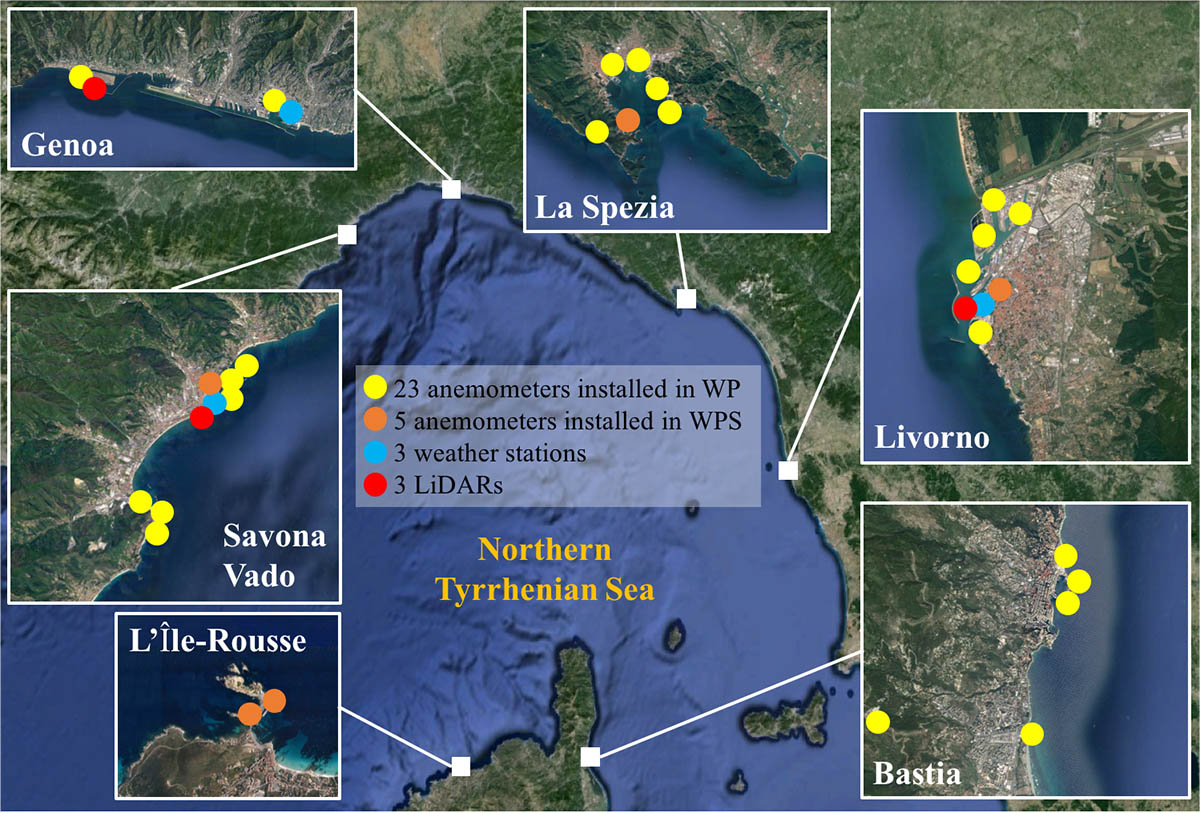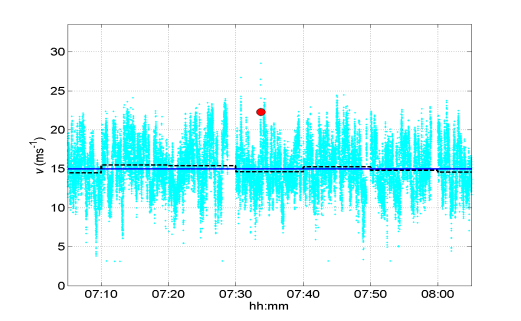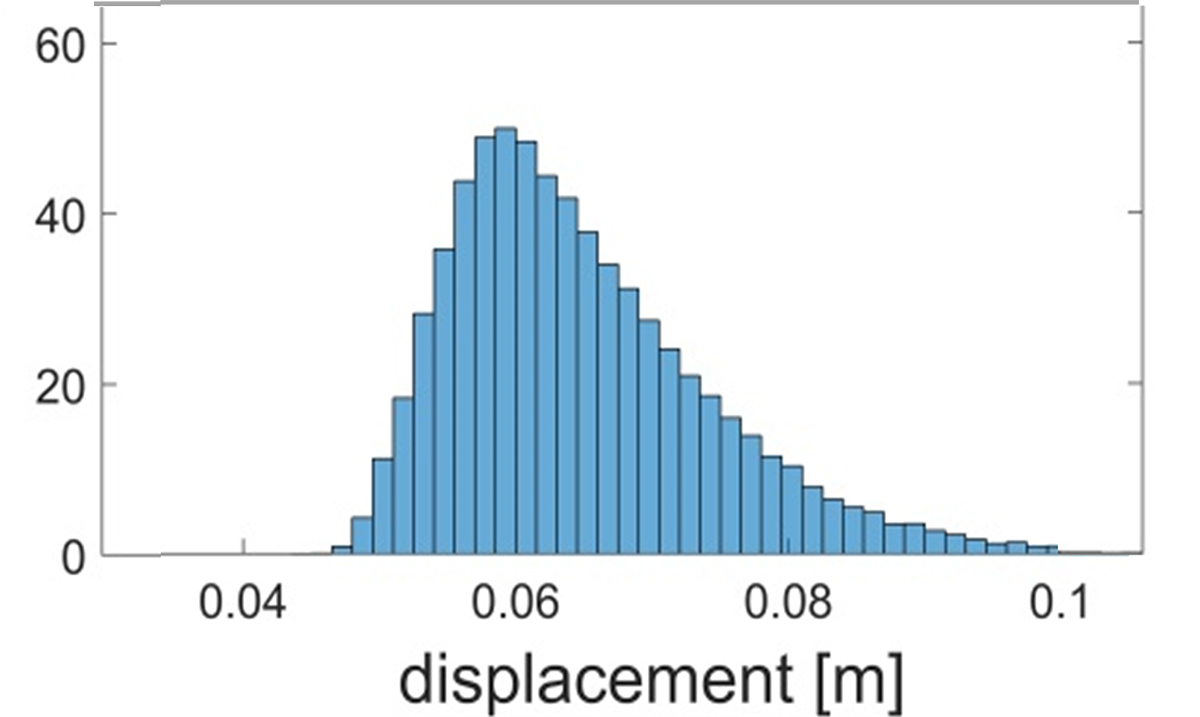
PROJECT
The safety and sustainability of the built with regard to the natural and anthropogenic actions are a primary goal of engineering. The wind is the most destructive natural phenomenon: 70% of the damage and death caused by nature every year in the world comes from the wind. Evaluating its actions is therefore crucial for society and its economy. The European wind climate and that of many countries are dominated by extra-tropical cyclones and thunderstorms. The genesis and evolution of cyclones is known since the 1920s. Its actions on construction have been framed since the 1960s and engineering still uses these models. Thunderstorm is a complex, mysterious and devastating phenomenon that results in actions often more intense than cyclonic ones. Despite this awareness and the research in the last thirty years there is no model of the thunderstorm winds and their actions similar to that established over half a century ago for cyclones. Likewise, there is no unified framework for cyclone and thunderstorm wind actions. This occurs because the complexity of thunderstorms makes it difficult to establish realistic and simple models; their short duration and small extension limits the available measures; there is a clear gap between research in atmospheric sciences and wind engineering.
This constitutes a serious shortcoming in structural and civil engineering, as it gives rise to unsafe and / or overly expensive works. The unsafety of small and medium-height light structures is pointed out by their frequent damage and collapse in thunderstorms. The excessive cost of tall buildings in areas dominated by thunderstorms is due to the fact that the wind speed due to these phenomena is maximum at the ground. The presence in Genoa of a leading wind engineering group with interdisciplinary expertise in atmospheric sciences, the creation of a unique and unprecedented wind monitoring network in previous European projects managed by this group, the existence of new laboratories to simulate large-scale thunderstorms, CFD developments and a huge network of international co-operations are epochal conditions to overcome these limits and project the wind science into a new era. The Advanced Grant 2016 awarded to the Project THUNDERR by the European Research Council is a major fruit of this background. THUNDERR is an acronym of THUNDERstorm that expresses the innovative Roar of this research. It aims to detect thunderstorms, create a database of meteorological records and scenarios, conduct unprecedented laboratory tests and numerical simulations, formulate a thunderstorm model appropriate for both atmospheric sciences and structural design, change the format of wind actions, engineering practice and the codification system, make building safer and more sustainable, bring about a profound impact on society and its economy.
OBJECTIVE 1 - THUNDERSTORM
Despite a lot of research, literature lacks of a thunderstorm model shared by scientific community, consistent with physical properties and suitable for simple engineering evaluations. This objective aims at formulating a novel, interdisciplinary and unitary model of thunderstorm outflows, with the dual prospect of being itself a challenging scientific result and, at the same time, of being a robust basis to carry out engineering analyses with a ground-breaking impact on construction and society. This model would be the counterpart of the model diffused and shared worldwide from the ‘60s to represent synoptic events.
WP 1. Thunderstorm detection.
An unprecedented wind monitoring network created by two previous EU projects will be enhanced by a novel LiDAR aiming to detect the position, diameter, direction, and translational speed of downbursts. A semi-automatic expert system will be realised and calibrated through the study of weather scenarios to separate different wind events. Novel catalogues will be created that list the main parameters of each event and the series of the independent extreme wind speed values. and a unique dataset will be disclosed to scientific community. A unique patrimony of data will be put at disposal of scientific community and society.
WP 2. Thunderstorm analysis
Outflow signals will be decomposed into component functions and statistical averages will be evaluated. LiDAR and antenna mast data will be investigated to determine the time-space evolutionary wind speed profiles. An unprecedented set of large-scale downbursts will be simulated and detected. Wind tunnel tests will be also performed in smaller scale facilities to evaluate scale effects using field measurements as reference data. Comparative simulations of downbursts will be performed by impinging wall jet and sub-cloud models through RANS and LES. Research will be carried out to apply sub-cloud models by LES. Field measures will be used as reference data to calibrate wind tunnel and CFD simulations. A wide collection of information will be gathered (e.g. GFS, MSG, Radar Doppler images, lightning data) to classify the weather scenarios in which thunderstorms occur. Research will be carried to link weather scenarios and wind speed data. Advances in downburst forecast will be pursued. Damage and losses due to windstorms will be traced to separate and classify the impact of cyclones and thunderstorms, gathering a catalogue of links between wind causes and effects.
WP 3. Thunderstorm representation.
Thunderstorm outflows will be represented by novel wind field models and probability distributions aiming to become the counterpart of the classic synoptic wind representation. Field measurements, wind-tunnel tests, CFD simulations and weather survey will be re-elaborated to formulate a novel model of the thunderstorm outflows. Pilot benchmark studies in monitored area will be carried out to assess model errors. The distribution of the extreme wind speed of thunderstorm outflows and their parameters (frequency, position, diameter, direction and translational speed) will be developed and calibrated through long-term Monte Carlo simulations. A pair of Monte Carlo simulators will be developed: the outer will generate long-term series of thunderstorm parameters; the inner will simulate, for these parameters, non-stationary and non-Gaussian short-term outflow fields. An effort will be made to take climate changes into account.
Objective 2 – Structures
Despite a lot of research, literature is still lacking in simple and physically realistic methods, shared by scientific community, applied in engineering practice and supported by robust data. Based on results of Objective 1, this shortcoming will be overcome by developing a challenging method to evaluate thunderstorm actions on structures. Well beyond this result, the classical method for cyclones and the new method for thunderstorms will be encapsulated into an unprecedented wind loading format easily transferable to engineering practice and codification, leading to wind-safer and cost-efficient structures.
WP 4. STRUCTURAL ANALYSIS
Two towers will be equipped by anemometers, accelerometers and strain-gauges, and subjected to wind tunnel tests. This monitoring will provide simultaneous measurements of the outflow velocity and structural response. Closed form solutions will be disclosed to thunderstorms by generalising the equivalent wind spectrum to transient winds. Three complementary methods will be set to evaluate equivalent static loading: time-domain analysis, response spectrum technique and evolutionary spectral method. The classical unique wind loading will be separated into two loading conditions for cyclones and thunderstorms, producing a novel set of partial and combination factors for thunderstorms. Research will be carried out to merge this new philosophy into performance-based design.
WP5 – Impact on Construction
An archive of structure test-cases (e.g. low- and high-rise buildings, towers, roofs, bridges, wind turbines, solar panels, transmission lines, and piled containers) in different wind climates will be gathered. Equivalent static wind loading will be evaluated by classic method and by new loading format. Additional costs or savings due to changes involved by new method will be estimated. Structures and climates for which classical analyses lead to unsafe design or excessive caution will be identified. Conditions where damage and collapse occurred will be investigated to ascertain the presence of thunderstorms. Global economic analyses will be conducted per classes of structures and climates to evaluate the global impact of new loading format.
Objective 3. Dissemination
Dissemination of research products will be conducted by classical tools such as publications, conference presentations, and a dedicated project website. In addition, some breaking ideas will be implemented aiming to create a vast involvement of international scientific community and, even more, a direct support of this same community to the project itself; these activities will be carried according to three main pathways: An open-website catalogue of thunderstorm outflows will be created (2018) (WP6); an International Advanced School (2020) (WP7) and an International Workshop (2022) (WP8) on “Thunderstorm outflows and their impact on structures” will be held; International Awards for research activities (WP9) and master theses (WP10) linked to this project will be awarded (2022).









